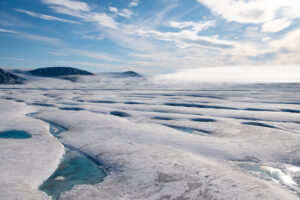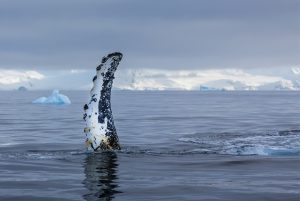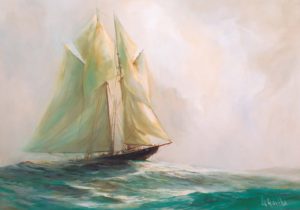
People & Culture
On thin ice: Who “owns” the Arctic?
As the climate heats up, so do talks over land ownership in the Arctic. What does Canadian Arctic Sovereignty look like as the ice melts?
- 4353 words
- 18 minutes
Exploration
On the 100th anniversary of Shackleton’s funeral, the Endurance22 Expedition has located the iconic ship

Sir Ernest Shackleton’s lost ship Endurance — one of the greatest undiscovered shipwrecks — has been found at a depth of 3,008 metres in the Weddell Sea in Antarctica.
Scientists on the Endurance22 Expedition used helicopters, underwater robots and other state-of-the-art technology to find and film the Endurance in one of the most complex and challenging shipwreck searches ever undertaken. Ghostly images and video of the historic ship, which sank during Shackleton’s Imperial Trans-Antarctic expedition in 1915, show it to be in remarkable condition, despite being crushed by sea ice and submerged three kilometres below the surface of the ocean for over 100 years. Timbers intact, the ship’s stern still bears the name Endurance, visible and defiant.
Acclaimed popular historian, broadcaster and Fellow of the Royal Canadian Geographical Society Dan Snow carried the flag of the RCGS on the expedition, an experience he described as “like time travel” in his recounting of the discovery. (The RCGS played a role in the 2014 discovery of another lost ship at the opposite pole: Sir John Franklin’s Erebus.)

Describing the crew’s reactions to the find, he says cheers upon seeing the data showing Endurance on the seabed turned to tears of relief as the autonomous underwater vehicle returned safely.
The Endurance22 Expedition, working from South African polar research ship S.A. Agulhas II, was organized by the Falklands Maritime Heritage Trust and led by British polar geographer John Shears.
“It’s been my great privilege and honour to lead [this expedition],” says Shears. “We have made polar history and successfully completed the world’s most challenging shipwreck search.”
Mensun Bound, marine archeologist and director of exploration on the expedition, was “overwhelmed by the good fortune” in finding the vessel and struck by the excellent condition of the 144-foot shipwreck.
“This is by far the finest wooden shipwreck I have ever seen,” says Bound. “It is upright, well proud of the seabed, intact, and in a brilliant state of preservation. You can even see “Endurance” arced across the stern. This is a milestone in polar history.”

The wreck’s location was logged by its captain, Frank Worsley, when it went down 107 years ago. Previous attempts to locate the ship, however, failed due to the dangerous conditions of the ice-covered Weddell Sea. Endurance22 found Endurance just six kilometres from the location recorded by Worsley.
The tale of the 28-man crew’s survival following the wreck has reached legendary status. The men trekked across the Antarctic sea ice, hunting and living off seals and penguins and then setting sail in lifeboats to reach uninhabited Elephant Island. Shackleton and some of his crew were then tasked with rowing 1,300 kilometres to South Georgia before they could seek help from a whaling station. It took four subsequent rescue attempts for Shackleton to eventually pick up the rest of his crew, a whole two years after the Endurance originally set sail from London, England.

“People thought the story of the Endurance was over when it sank in November 1915,” wrote Snow in his newsletter announcing the discovery. “But it wasn’t. Now, we discover how her story ended.
“As Shackleton famously said, ‘By endurance we conquer.’”
Are you passionate about Canadian geography?
You can support Canadian Geographic in 3 ways:

People & Culture
As the climate heats up, so do talks over land ownership in the Arctic. What does Canadian Arctic Sovereignty look like as the ice melts?

Environment
What the collapse of the Milne ice shelf and the loss of a rare Arctic ecosystem might teach us about a changing planet

Environment
Ten years after the release of her seminal book Sea Sick, Alanna Mitchell again plumbs the depths of the latest research on the health of the world’s oceans — and comes up gasping

History
The symbolism of the iconic Canadian fishing and racing schooner Bluenose may be as relevant today as it was 100 years ago when the ship first hit the water